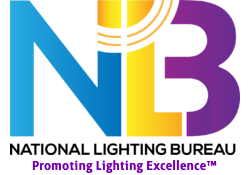Case Histories: Retail Lighting
Lights, Center, Action: How improving a center’s lighting program can increase its profits
by Robert E. Horner
If you’ve ever been inside a dark enclosed mall, you know about the impact of lighting. It can affect your mood as much as a dreary, overcast day can. Developers realize that a shopper’s dismal mood doesn’t translate into escalating sales. In order to create a more inviting atmosphere, some malls have gone to great lengths to brighten things up.
Consider the case of Colonial Park Plaza, at the time a 500,000 square-foot, 72-store mall in Harrisburg, Pennsylvania. The common area lighting only provided 3- to 5-foot candles of light, creating what some merchants called a dingy look. The existing lighting system was scrapped, and a new one installed that provided more light and efficiency. In fact, it reduced system operation and maintenance costs by 66 percent.
Numbers like this would make most center managers jump for joy. Although cutting expenses is just part of the game for a center’s management, increasing profits is the ultimate goal. Taking another look at your lighting program will reduce maintenance expenses and can also increase profits.
The most significant aspect of light is not its quantity, but rather its quality. Good lighting is electric illumination provided where and when it is needed, with quality attributes (including quantity or illuminance) created specifically for the spaces, tasks, and people involved.
The most important question you can ask about lighting is “Why did we install lighting here in the first place?” The obvious answer is, “To see,” but the larger objective is to promote shopping. The same can be said about HVAC, given that people will tend to shop longer if they are comfortable. In order to be efficient, it needs to achieve and maintain certain temperature and humidity conditions without drafts and excessive noise. Achieving those parameters via a system that costs less to operate is the most sensible solution.
Using a cost-effective lighting program is also desirable, but a new lighting system can have long-term effects that are much more profitable. The new lighting at Colonial Park Plaza gave what shoppers characterized as new “sparkle” to the center’s promenade area, as well as depth and brilliance to surface colors. As a result, the mall’s appearance brightened, and more people started shopping there. In fact, over a 2-year period, traffic counts increased by one-third after the lighting program was implemented. Over the same period, data showed that merchants’ sales increased 38 percent; profits increased 19 percent. Given the center’s new appearance and traffic flow, more retailers opened stores there, cutting the center’s vacancy rate 32 percent and in turn increasing sales.
Needless to say, the center’s owners were extremely pleased; the increased sales and reduced vacancy contributed significantly to the bottom line. In fact, the value of the benefit was more than 200 times the value of the energy and other operation and maintenance lighting system cost- savings.
Another important effect was the decrease in the number of accidents involving senior citizens. In the past, the mall had been subject to many slip-and-fall accidents exposing the center to claims, litigation, and bad publicity. After the new lighting was installed, the number of these accidents diminished. An added bonus: The insurance premiums paid by the center’s management went down because the insurer’s underwriters agreed that lower risks merited lower premiums.
The center’s resale value was also significantly enhanced after the new installation. In fact, when you factor in that figure, along with merchant profits, increased owner rental income, and lower operation and maintenance costs, the investment in new lighting paid for itself in less than six days.
Improved lighting can also achieve significant effects inside stores. Case histories show that well lit areas create a pleasant visual environment, highlight impulse-purchase merchandise, support display effectiveness, help speed retrieval of items in storage and reduce the number of errors made.
Outdoors, lighting can have even more of an impact because, at night, lights create the visual environment. In the case of Fairmont Fair Mall in Camillus, New York, new parking lot lighting not only made the center more visible from the roadway, it added a sense of security to the mall. And, indeed, the center did become a much safer location to park. Despite the increased volume of cars, vandalism rates dropped during the Christmas season.
The lighting itself operated as a security device, opening up previously dark and dangerous corners. The center’s management was thus able to reduce the extent of security patrols. In the end, safety as well as savings were increased. Better lighting also permitted snowplowing to proceed much faster, reducing the cost of operating the equipment and, of course, allowing the mall to open sooner for customers.
The increased traffic counts boosted sales and sales-based rental income and contributed to higher asset value. Had the decision to redo the lighting program been based solely on energy costs, it might never have been carried out; payback would have occurred in little over 100 years. But, because the lighting was revamped, actual payback, not including increased center asset value, was achieved in less than 100 days.
Is your center deriving as much benefit as it could from its lighting? Could you somehow be using lighting to enhance the shopping experience, to encourage more people to shop and to shop more? Could you be using it, too, to lower your costs?
Bob Horner is the fluorescent product group marketing manager for Osram Sylvania in Danvers, Massachusetts. He is also vice chair of the National Lighting Bureau, a nonprofit educational agency.
This article originally appeared in Shopping Center Business, May 2000. Copyright 2000 France Publications, Inc.
